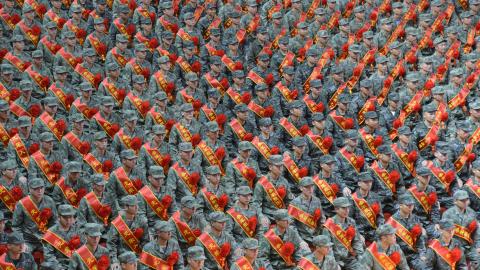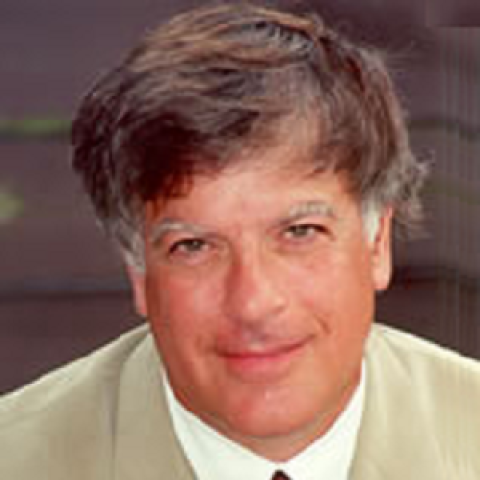In the early hours of April 26, 1986, Leonid Toptunov, a young, inexperienced and tired member of the night crew at the Chernobyl nuclear power station, near Kiev, allowed the level of reactivity in one of the plant's reactors to fall to a dangerously low level during a test to determine how long the turbines would continue to provide power during a shutdown.
Reactors of the RBMK type ("high power channel type") used at Chernobyl are unstable at low power because they quickly begin to be poisoned by xenon and iodine. Shutting down the reactor, however, meant halting the test. Instead, the operators, under pressure from their superiors, increased the power even though, in violation of all rules of safety, automatic emergency shutdown systems had been disabled for the experiment. In doing so, they signed their own death warrants and that of the plant.
The increase in reactor power led to a massive buildup of steam in the reactor. The reactor became increasingly uncontrollable. Finally, the operators pushed the emergency power reduction button to insert the control rods but only a partial insertion was possible. The ground began to shake. There was a powerful steam explosion followed by an even more powerful hydrogen explosion. The explosions blew apart the reactor and the reactor building and released 50 tons of evaporated nuclear fuel into the atmosphere.
Chernobyl demonstrated the limits of technical safety in a modern society. It was a particular comment, however, on the security of nuclear installations in a country that by culture and tradition places a low value on human life.
Today, Russia and Ukraine are once again heavily committed to nuclear power. But the question remains: has anything really changed?
Chernobyl was the worst nuclear accident in history. The atom bomb dropped on Hiroshima produced almost 4.5 tons of radioactive substances. The no. 4 reactor at Chernobyl spewed almost 50 tons of evaporated fuel in the atmosphere, the equivalent of ten Hiroshima bombs, minus the initial blast and firestorm. Chernobyl, however, was an avoidable catastrophe. It occurred because, in the Soviet Union, the goals of the state far outweighed the safety of individuals.
This disregard for the risk to individuals was reflected, in the first place, in the decision to place a RMBK-1000 reactor, which does not have a containment structure and is known for high levels of radioactivity, in a location 80 miles from Kiev, a major city. At the same time, for 35 years, Soviet officials hid information about nuclear accidents not only from ordinary citizens but from the employees of nuclear power plants contributing to an atmosphere of carelessness and complacency.
Finally, the disregard for safety was reflected in the drive to boost production that was exacerbated in 1986 by the policy of "acceleration," Gorbachev's first attempt to modernize the Soviet system.
In the aftermath of the disaster, Soviet authorities said the experiment that led to the explosion was an attempt to test a safety device. But, as Zhores Medvedev, a former Soviet scientist, wrote in his book,The Legacy of Chernobyl, the safety device should have been tested and installed when the reactor was first certified in 1984. The decision to begin using the reactor with an important safety feature either missing or insufficiently tested was the result of the pressure to finish projects ahead of time whatever the consequences.
The same considerations played a role on April 26, 1986, the night of the explosion. The end of the month produced a heightened demand for electricity as factories "stormed" to meet production targets and this caused the test to be interrupted and postponed until the night shift. The night crew, however, had no previous experience of conducting tests. The task and procedures had been explained only to the day and evening shifts.
Finally, the risky course of trying to raise the power of the reactor after Toptunov had reduced the reactor's reactivity to too low a level by mistake was the result of pressure from superiors who wanted to complete the test at all costs and regardless of risk. This determination, the product of an inhuman system, made it possible to intimidate the operators, including Toptunov, who, at first, refused to increase the power and wanted to close the reactor down.
The Chernobyl plant is now idle. Its last reactor was taken out of service six years ago. The RBMK reactors in Russia have been modified. Control rod insertion now takes place in 12 seconds and uranium of a slightly higher enrichment is being used in the core. This is believed by specialists to have reduced the technical likelihood of another Chernobyl.
In other respects, however, the disregard for safety rooted in disrespect for the individual is as much a problem in present day Russia as it was in the Soviet Union.
The lack of concern for safety by the authorities in Russia today takes two forms, an indifference to the influence of social conditions and an apparently lax attitude toward protecting nuclear facilities from terrorism.
Of these problems, the indifference to social conditions is the more visible. Pay in nuclear power stations is low and this has led to an exodus of qualified employees. Workers moonlight and this affects their job performance. Employees in lower and middle level positions at the Leningrad atomic power station work as taxi drivers at night and there is widespread theft. The once sheltered "closed cities" where many of Russia's nuclear facilities are located lead the country in the growth of drug addiction, which can affect not only young people but also their parents who can make mistakes as a result of stress.
At the same time, the nuclear power industry is also affected by corruption. In 2003, a water measuring device in the cooling system of the Leningrad atomic power plant was stolen and an old mechanism put in its place. A year later, the legally certified servo-motor for inserting control rods disappeared from the station and a black market servo-motor was substituted for it. Both of the thefts involved profits of millions of dollars and would not have been possible without high level participation.
Russian authorities also show little initiative in protecting nuclear facilities from terrorists. According to some estimates, the security requirements of atomic power stations and other nuclear facilities are only 10 to 20 per cent financed. This is one of the reasons that in 2002 a group of activists from Greeenpeace were able to penetrate the territory of the Mining Chemical Combine in the Krasnoyarsk region, Russia's principal depository for spent nuclear fuel, make a film from the roof of the building, and leave unmolested. The depository contains billions of curies of radioactive waste, enough for dozens of Chernobyls.
The Chernobyl disaster changed the map of the former Soviet Union. An exclusion zone with a 30 kilometer radius around the reactor has returned to nature. Nearly five million persons still live in areas that will remain contaminated with radiation for the next 24,000 years. Greenpeace, in a recent report, said the number of additional deaths in Russia, Ukraine and Belarus in the last 15 years directly attributable to Chernobyl is 200,000.
What Chernobyl did not do, however, is change the underlying lack of respect for human life that gave rise to it. An unresponsive and largely uncontrollable bureaucracy continues to rule in the three Chernobyl lands and, in Russia, the tendency toward authoritarianism is strengthening steadily.
Under these circumstances, it is impossible to say that there will not be another Chernobyl. On the contrary, the specter of Chernobyl will continue to haunt the fears of Russians and Ukrainians and the aspirations of rulers who, fifteen years after the fall of the Soviet Union, remain infatuated with the chimera of undivided power.

















